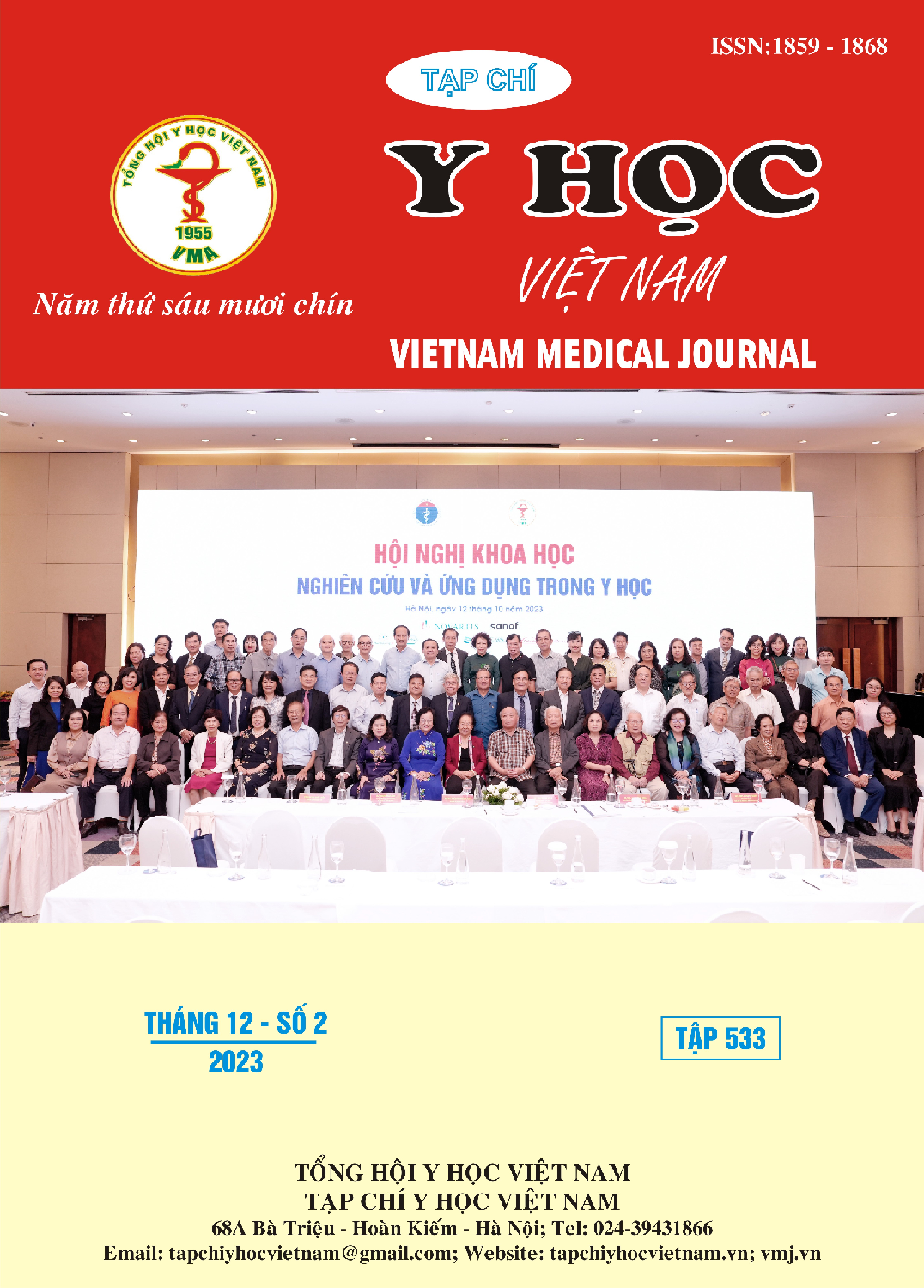CLINICAL FEATURES AND RESULTS OF PERCUTANEOUS EMBOLIZATION TREATMENT FOR CHYLOTHORAX
Main Article Content
Abstract
Purpose: To investigate the clinical characteristics and treatment outcomes of pleural effusion due to chylothorax treated with percutaneous catheterization. Materials and methods: A retrospective descriptive study was conducted on patients with chylothorax who underwent percutaneous intervention from January 2019 to August 2023. Results: The average age was 49.1 ± 12.4 years (ranging from 27 to 74 years) with a male-to-female ratio of 1.8. The majority of patients had traumatic chylothorax (86%). The etiology was divided into two groups: postoperative/traumatic chylothorax (68%) and spontaneous chylothorax due to thoracic duct abnormalities or idiopathic causes (32%). The percutaneous intervention was successful in 92% of cases, with 23 patients resolving their chyle effusion, and 2 cases deemed unsuccessful, both of which were spontaneous chylothorax treated with pleurodesis. Complications occurred in 2 patients who had gallbladder leakage and were treated with laparoscopic cholecystectomy. There were no complications related to disability or mortality. Conclusion: Chylothorax is commonly encountered after trauma or operation. Percutaneous lymphatic embolization is a highly effective treatment method, especially for cases of post-traumatic/operative chyle effusion.
Article Details
References
2. J. S. Orange, et al, ‘Acute chylothorax in children: selective retention of memory T cells and natural killer cells’, J. Pediatr., vol. 143, no. 2, pp. 243–249, Aug. 2003, doi: 10.1067/S0022-3476(03)00305-6.
3. S. Lv et al., ‘A review of the postoperative lymphatic leakage’, Oncotarget, vol. 8, no. 40, pp. 69062–69075, Apr. 2017, doi: 10.18632/ oncotarget.17297.
4. Cương N. N., et al., ‘đánh giá kết quả bước đầu kỹ thuật nút tắc ống ngực điều trị rò dưỡng chấp tại bệnh viện đại học y hà nội’, 2020.
5. C. H. Doerr, et al, ‘Etiology of Chylothorax in 203 Patients’, Mayo Clin. Proc., vol. 80, no. 7, pp. 867–870, Jul. 2005, doi: 10.4065/80.7.867.
6. G. J. Nadolski and M. Itkin, ‘Thoracic Duct Embolization for Nontraumatic Chylous Effusion: Experience in 34 Patients’, CHEST, vol. 143, no. 1, pp. 158–163, Jan.2013, doi:10.1378/chest.12-0526.
7. A. Gurevich et al., ‘Nontraumatic Chylothorax and Chylopericardium: Diagnosis and Treatment Using an Algorithmic Approach Based on Novel Lymphatic Imaging’, Ann. Am. Thorac. Soc., vol. 19, no. 5, pp. 756–762, May 2022, doi: 10.1513/AnnalsATS.202103-262OC.
8. S. K. Nair, et al, ‘Aetiology and management of chylothorax in adults’, Eur. J. Cardiothorac. Surg., vol. 32, no. 2, pp. 362–369, Aug. 2007, doi: 10.1016/j.ejcts.2007.04.024.
9. C. Bolger, et al, ‘Chylothorax after oesophagectomy’, Br. J. Surg., vol. 78, no. 5, pp. 587–588, May 1991, doi: 10.1002/ bjs.1800780521.
10. V. Pamarthi et al., ‘Thoracic Duct Embolization and Disruption for Treatment of Chylous Effusions: Experience with 105 Patients’, J. Vasc. Interv. Radiol., vol. 25, no. 9, pp. 1398–1404, Sep. 2014, doi: 10.1016/j.jvir.2014.03.027.


